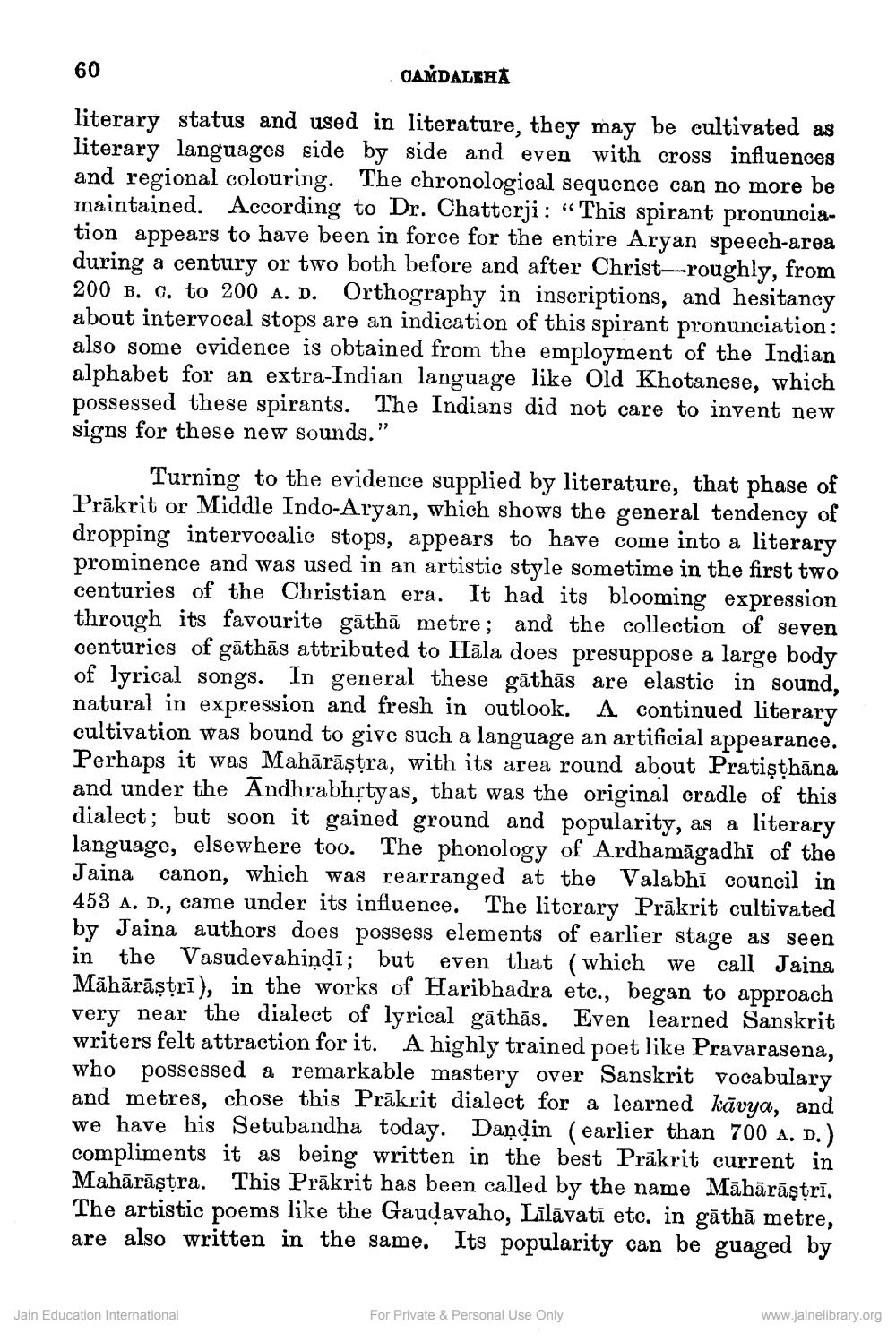________________
CAMDALEHA
literary status and used in literature, they may be cultivated as literary languages side by side and even with cross influences and regional colouring. The chronological sequence can no more be maintained. According to Dr. Chatterji: "This spirant pronunciation appears to have been in force for the entire Aryan speech-area during a century or two both before and after Christ-roughly, from 200 B. C. to 200 A. D. Orthography in inscriptions, and hesitancy about intervocal stops are an indication of this spirant pronunciation: also some evidence is obtained from the employment of the Indian alphabet for an extra-Indian language like Old Khotanese, which possessed these spirants. The Indians did not care to invent new signs for these new sounds."
60
Turning to the evidence supplied by literature, that phase of Prakrit or Middle Indo-Aryan, which shows the general tendency of dropping intervocalic stops, appears to have come into a literary prominence and was used in an artistic style sometime in the first two centuries of the Christian era. It had its blooming expression through its favourite gatha metre; and the collection of seven centuries of gathās attributed to Hala does presuppose a large body of lyrical songs. In general these gathās are elastic in sound, natural in expression and fresh in outlook. A continued literary cultivation was bound to give such a language an artificial appearance. Perhaps it was Mahārāṣṭra, with its area round about Pratiṣṭhāna and under the Andhrabhṛtyas, that was the original cradle of this dialect; but soon it gained ground and popularity, as a literary language, elsewhere too. The phonology of Ardhamagadhi of the Jaina canon, which was rearranged at the Valabhi council in 453 A. D., came under its influence. The literary Prakrit cultivated by Jaina authors does possess elements of earlier stage as seen in the Vasudevahinḍī; but even that (which we call Jaina Māhārāṣṭrī), in the works of Haribhadra etc., began to approach very near the dialect of lyrical gathās. Even learned Sanskrit writers felt attraction for it. A highly trained poet like Pravarasena, who possessed a remarkable mastery over Sanskrit vocabulary and metres, chose this Prakrit dialect for a learned kavya, and we have his Setubandha today. Danḍin (earlier than 700 a. D.) compliments it as being written in the best Prakrit current in Mahārāṣṭra. This Prakrit has been called by the name Māhārāṣṭrī. The artistic poems like the Gauḍavaho, Lilavatī etc. in gāthā metre, are also written in the same. Its popularity can be guaged by
Jain Education International
For Private & Personal Use Only
www.jainelibrary.org




